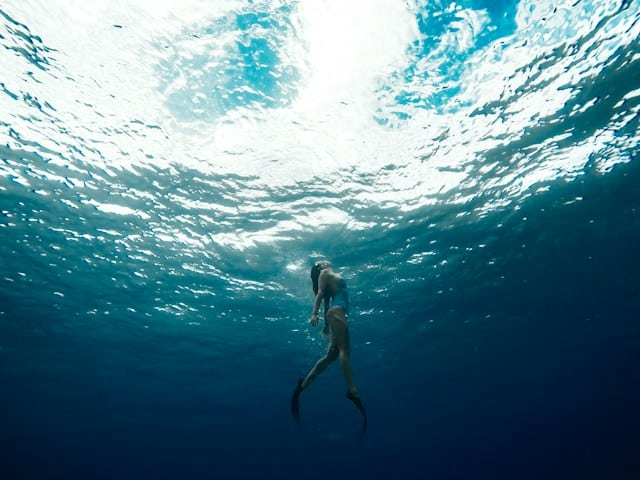Diving deep: the world of professional underwater sports

When we talk about sports, we usually picture activities taking place on a field, court, or track. But there is another world of sports that often goes unnoticed – the underwater world. Here, sports enthusiasts encounter a completely different set of challenges, which involve mastering the elements of water and dealing with extreme depths. This is the world of professional diving. From technical to freediving, the universe under the water surface is as vast as it is breathtaking.
The Adrenaline Rush of Technical Diving
For many of you, diving might mean a recreational activity, a fun way to explore the serenity of marine life. But technical diving is a different ball game altogether. It’s a type of scuba diving that surpasses the limits of recreational diving, demanding a lot more commitment, training, and courage from the diver.
Also to read : What role does genetics play in athletic ability and potential?
Technical diving involves deep dives, beyond 40 meters (130 feet), often to depths of 100 meters or even deeper. It requires special equipment, multiple gas mixes, lengthy decompression stops, and often diving in overhead environments. The divers also have to be prepared for potential hazards like decompression illness, gas narcosis, and oxygen toxicity.
The Most Celebrated Technical Divers in The World
When talking about the world of professional underwater sports, we simply can’t ignore the champions who have achieved the deepest dives. In the sphere of technical diving, these men and women are nothing short of modern-day explorers, venturing into the depths that most of us can’t even fathom.
Also to read : What Are the Psychological Strategies for Coping with Setbacks in Competitive Sports?
One of the most celebrated divers is Ahmed Gabr, who holds the Guinness World Record for the deepest dive. In 2014, this Egyptian diver reached an astounding depth of 332.35 meters (1,090.4 feet). The dive lasted 14 hours, including the necessary decompression time. Ahmed’s achievement is a testament to the extreme limits that technical diving can push to.
The Magic of Freediving and its Champions
Freediving, or breath-hold diving, is another fascinating form of underwater sport. Unlike scuba or technical diving, freediving doesn’t use any breathing apparatus. The divers rely solely on their ability to hold their breath while they dive into the depths of the water.
While it may sound a tad bit daunting, freediving can be incredibly liberating. Without the bulk of a scuba tank or other gear, divers can move through the water with a grace and agility that’s hard to match. Freediving demands a unique blend of physical fitness, mental fortitude, and above all, an intimate connection with the water.
When it comes to freediving, the name that instantly comes to mind is that of Herbert Nitsch, also known as ‘The Deepest Man on Earth’. On June 6, 2012, Nitsch set the world record for freediving by diving 253.2 meters (831 feet) in the No Limits category. His achievement remains unparalleled in the world of freediving.
The Rigors of Diver Training
Whether you’re a scuba diver, a technical diver, or a freediver, training is an essential part of your journey. It’s not just about learning the right techniques or getting comfortable with the equipment. Diving training also involves building physical strength and endurance, understanding the science of diving, and learning to read the underwater environment.
Scuba and technical diving training usually involves learning to use different gas mixes, understanding the decompression procedures, and handling potential emergencies. Understanding the use of dive computers, and how to read them correctly is also crucial.
On the other hand, freediving training focuses more on breath-hold techniques, oxygen efficiency, equalizing pressure, and dealing with the intense physical and mental challenges of diving deep without a breathing apparatus.
The Future of Underwater Sports
As we explore new depths and push our limits, the world of professional diving continues to evolve. Emerging technologies are making diving equipment safer and more efficient. Training methods are becoming more sophisticated, incorporating elements of sports science and psychology.
In the future, we might see even deeper dives, both in technical diving and freediving. The hunt for new diving sites, both natural and artificial, will continue. We might also witness the emergence of new forms of underwater sports, combining elements of diving with other activities like underwater rugby or hockey.
As we delve deeper into the underwater world, we not only discover new wonders but also learn more about ourselves, our capabilities, and our relationship with the water. In the words of French naval officer and explorer Jacques Cousteau, "The sea, once it casts its spell, holds one in its net of wonder forever."
The Thrill of Cave Diving and Its Pioneers
Cave diving is yet another variant of technical diving that has its own set of unique challenges and thrills. As the name suggests, cave diving involves exploring underwater caves, often in zero visibility conditions. This type of diving is considered one of the most dangerous, as it combines the challenges of deep diving with the risk of getting lost or trapped inside the caves.
The pioneers of cave diving are a determined bunch, pushing the boundaries of technical diving to explore the untouched beauty of underwater caves. One such pioneer is Bill Stone, an American engineer and cave diver, who has been instrumental in developing techniques and technologies that have transformed the world of cave diving.
Another notable figure in the world of cave diving is Australian diver, Richard Harris. He gained international fame for his role in the 2018 rescue of a Thai soccer team trapped in a flooded cave. His exceptional cave diving skills played a crucial role in the successful rescue operation, and he was named the 2019 Australian of the Year for his heroic efforts.
The Evolution of Diving Equipment
Over the years, diving equipment has evolved dramatically, enabling divers to safely explore greater depths. One such development is the transition from open-circuit scuba systems to closed-circuit rebreathers. While open-circuit scuba systems release exhaled air into the water, closed-circuit rebreathers recycle the exhaled gas, making it possible for divers to stay underwater for longer periods.
In addition to this, advancements in dive computer technology have also greatly improved diver safety. Modern dive computers can now monitor multiple gas mixes, calculate decompression stops, and even alert divers to potential hazards such as oxygen toxicity or decompression illness. These devices have become an essential part of a diver’s kit, helping them navigate the underwater world more safely and efficiently.
Conclusion: The Limitless Potential of Underwater Sports
The world of professional underwater sports is a realm of infinite exploration and potential. From the adrenaline rush of technical diving to the silent beauty of freediving, the underwater world offers a unique blend of physical challenge and spiritual connection. Whether it’s setting a new world record for the deepest dive or exploring a previously uncharted cave system, every dive is a journey of discovery.
While the potential dangers of deep, technical, and cave diving are real, advancements in training methods and diving technology are making these sports safer and more accessible. The future of underwater sports holds exciting possibilities, from deeper dives to the development of new underwater sports and the discovery of new dive sites.
In the depths of the oceans, lakes, and caves, divers find more than just adventure. They encounter a unique ecosystem teeming with marine life, discover the tranquility that exists beneath the surface, and experience a sense of peace and connection that is hard to find elsewhere. The underwater world, in all its beauty and mystery, continues to beckon, promising new adventures and experiences for those brave enough to take the plunge.
